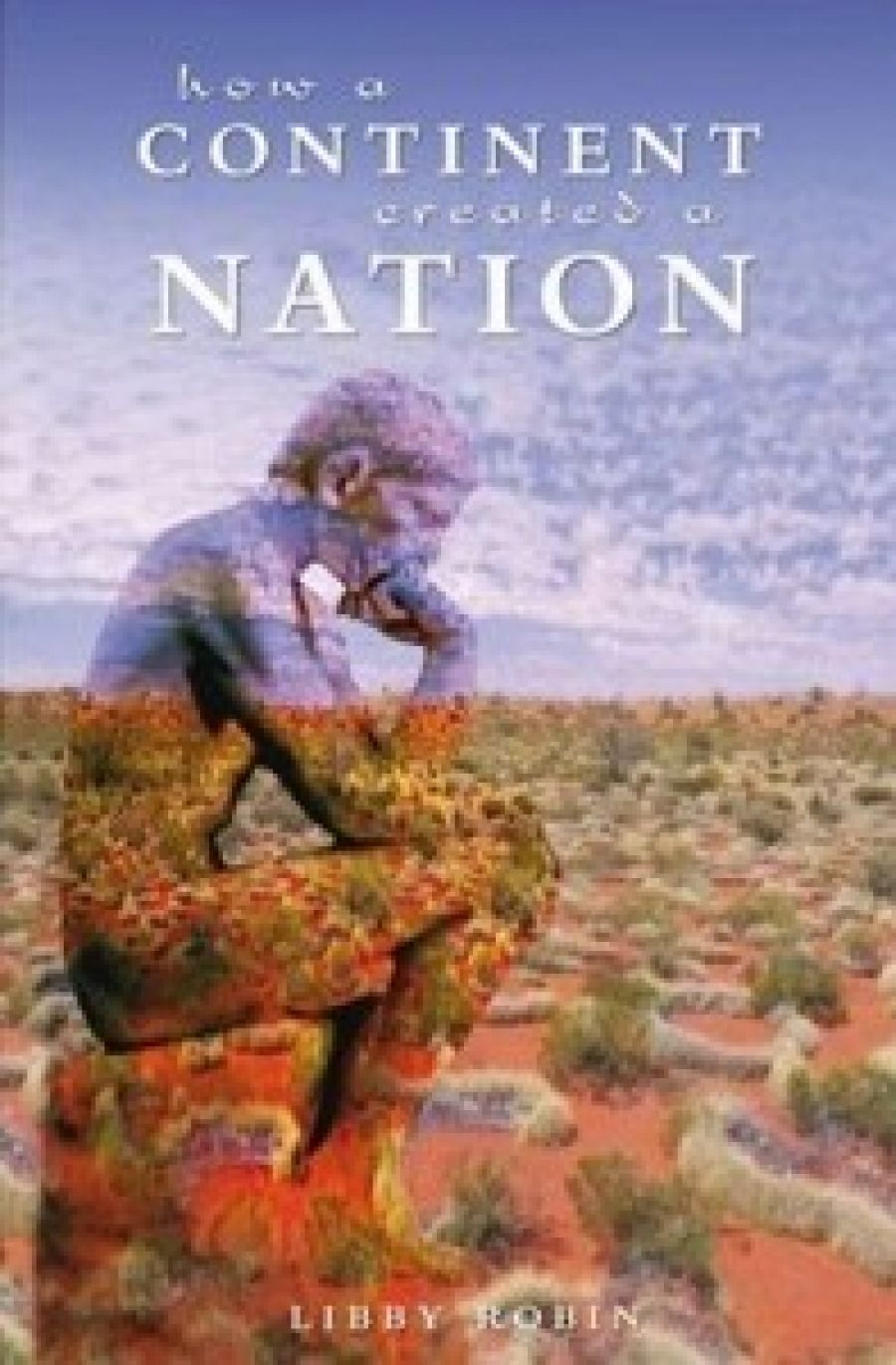
- Free Article: No
- Contents Category: Society
- Review Article: Yes
- Online Only: No
- Custom Highlight Text:
Regardless of debates over Australian cultural identity, the flag and a potential republic, the ‘Green and Gold’ colours of our national sporting teams are recognised worldwide. The Golden Wattle (Acacia pycnantha), from which these colours are derived, was first proposed as a national flower in the 1880s during the prelude to Federation. However, it was not until the 1988 Bicentenary Celebrations that it was formally declared as Australia’s floral emblem. Why was the wattle chosen for this honour over its main competitor, the spectacular red waratah? And what was the significance of using wattle as a symbol of national unity and mourning in the wake of the 2002 Bali bombings?
- Book 1 Title: How A Continent Created A Nation
- Book 1 Biblio: UNSW Press, $39.95 pb, 259 pp
The intriguing story of the Golden Wattle serves both as introduction and coda to Libby Robin’s new book, How a Continent Created a Nation. Dr Robin is an environmental historian at the Centre for Resources and Environmental Studies, Australian National University (ANU). In this absorbing work, she brings a unique historical perspective to understanding the interactions between science, politics and the land in the development of modern Australia.
A subtle but clear reference point for Robin’s argument is that the success of the dominant Eurocentric paradigms for science, agriculture and political decision-making has been compromised by failing to value indigenous knowledge of land and climate. Robin’s message could not be more timely: Australian climates (for there are many) simply do not follow the annual cycle of seasons so familiar to early European colonists. Indeed, the environmental booms and busts induced by the El Niño/southern oscillations may last for years at a time.
Unlike the more recent work of well-known environmentally concerned biologists such as Tim Flannery, Tim Low and Michael Archer, Robin’s book does not promote a specific path to an alternative, ecologically tuned future-Australia. Rather, she examines a range of activities that have helped bring Australian society to its current position on the environment. Each vignette is largely self-contained, well-referenced and grouped into themes under the chapter headings.
Robin’s choice of subject is intriguing in content and broad in scope. Most sections provide detailed accounts of what seem, at first glance, to be small things, mere sideshows in the Big History of Australia. But these little histories expose the largely unknown scientific underbelly of our growing nation: Wattle Day; the Gould League of Bird Lovers; the collection of lungfish in south-east Queensland; the Wool Seminars at ANU, from 1957 to 1959; the Arid Zone Newsletter and the CSIRO land surveys. Robin’s analysis of the drives to bring systematic, scientifically based agricultural practices to struggling farmers in the 1930s provides a cogent historical context for Carrie Tiffany’s wonderful novel, Everyman’s Rules for Scientific Living (2005).
The accumulated details from each episode provide the weight for Robin’s analysis of just how badly we have misunderstood our environment. As an example, the chapter entitled ‘The Empty North’ focuses on attempts to develop commercial farming in the Daly River Basin, situated between Darwin and Katherine. The completion of the Overland Telegraph in 1872 brought the north, apparently empty but ripe for development, into contact with the populated south. But ticks decimated cattle mustered in, for fattening, from surrounding stations. Then in 1899 floods forced the abandonment of Jesuit missions and their fruit plantations. In 1912, John Anderson Gilruth, a veterinarian, was appointed Administrator of the Northern Territory. He established a Commonwealth Government Experimental Farm at Daly River, with a well-defined programme of research and development. However, settlement proceeded before the experimental results were in, with no reference to previous failed attempts to farm the area. Unsurprisingly, the settlements failed yet again. Gilruth himself assumed a despotic management style that lead to the Darwin Rebellion of 1919, culminating in his house arrest and smuggled departure from Darwin.
These days, after repeated failures to farm the Daly River area, the land of the north is no longer empty: ‘The Daly now has people and it has memory ... and the people are not just white settlers from elsewhere, but local communities ... No longer are all the decisions for this country being made entirely by people who are not there.’ By taking a local perspective of the biophysical nature of the land, its flora and fauna, its own vagaries of climate, Robin argues that it becomes possible to integrate scientific, historical and indigenous views of the environment and how it might be used. The implication of this approach is both enlightening and challenging. For example, how can we effectively develop national parks for endangered native species when variations in local conditions pay scant regard to our precisely surveyed but artificial boundaries between protected reserve and developed farmland?
Who should read this book? For a start, anyone involved in managing our vast landscape: whether farmer or scientist, conservationist or developer, administrator or politician. But this is much more than a handbook or ready reference. If you have an interest in how Australia has developed as a nation, largely in spite of its environment, you will find much to learn here. Robin writes with a fluid and engaging style that will draw you into her histories. She will leave you looking at your environment with a viewpoint that ultimately is as radical as it is inevitable. For a fascinating example of Robin’s implementation of her vision, visit her collaborative project Strata: Deserts Past, Present and Future at http://cres.anu.edu.au/strata/.


Comments powered by CComment